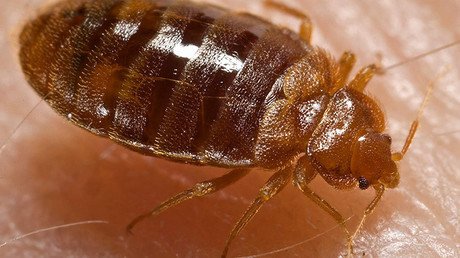German scientists say making selfies could spread hair lice among kids & teens

An excessively catching social ritual of taking selfies with friends may be literally very catching if you happen to touch heads with a person who has lice.
Lice among children between the ages of eight and 11, as well as young girls, are currently on the rise, according to Professor Hermann Feldmeier from Charite hospital’s Institute for Microbiology and Hygiene.
“Girls like to put their heads together when they take selfies,” Feldmeier said in an interview with health magazine Apotheken Umschau published on Wednesday.
Lice spread from a person to person in most cases by jumping from one head to another when they come in a direct contact, which means that overly concerned parents should stop fussing about hats and bed clothing that are not contagious.
“A transfer through textiles and objects is theoretically possible, but practically does not matter,” says Feldmeier.
Studies showed no signs of lice on the pillow cases of affected children because if a louse leaves a head, and has no access to blood, its hours are numbered.
“After only four hours without blood, a louse is so dried up that it can no longer suck,” the expert explained, adding that this is why disinfection and hygiene measures carried out by many parents have no effect in this regard.
READ MORE: Mammoth 6ft live tapeworm removed from man’s gut through his mouth (GRAPHIC PHOTOS)
In February, 2016, US scientists from the American Museum of Natural History and Weill Cornell Medicine announced that they successfully deciphered the genetic makeup of the blood-sucking parasites, which could lead to more effective ways to battle pesticide resistance in the unwelcome parasite.
It was found that the structure of a bedbug can be linked to 400 different types of bacteria, which indicated antibiotics might be a suitable way to curb any pest problem.
The DNA of the parasites was collected from more than 1,400 locations in New York City, including every subway station, to prove not all the parasites have the same composition.













